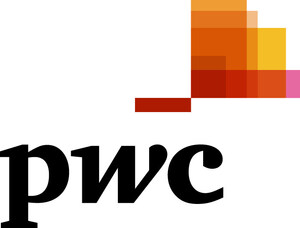Investors Anticipate Opportunities in Commercial Real Estate across All Major Property Sectors in 2013, According to Latest PwC Real Estate Investor Survey™
Greater Investor Optimism in Retail, Especially for National Regional Malls; Technology Office Markets and Warehouse Sector Showed Steepest Cap Rate Declines in Q4
NEW YORK, Dec. 19, 2012 /PRNewswire/ -- As 2012 draws to a close and the industry's recovery progresses, commercial real estate offers varied investment opportunities across each major sector and a diverse number of cities, even though macroeconomic uncertainties still exist, such as the fiscal cliff, according to the fourth quarter 2012 findings of the PwC Real Estate Investor Survey.
(Logo: http://photos.prnewswire.com/prnh/20100917/NY66894LOGO)
According to the report, investors in the office sector are showing a greater acceptance for slower growth and less apprehension about moving further out on the risk spectrum. Although core trophy assets remain the preferred target of both domestic and international investors, aggressive pricing and improved fundamentals have resulted in certain investors looking to buy either core in strong secondary markets or less-than-core in primary markets.
"The commercial real estate industry continues to show its investment durability as assets command attractive spreads over fixed-income investments and offer more stability than stocks, while most property sectors continue to post occupancy gains and rental rate growth," said Mitch Roschelle, partner, U.S. real estate advisory practice leader, PwC. "Foreign investors are particularly bullish on U.S. commercial real estate as they look for stable investments during uncertain times abroad. In 2013, Survey respondents expect to see an uptick in sales activity as property owners cull portfolios to take advantage of the low cap rate environment. And as investment capital continues its trend of matriculating beyond just apartments, cap rates are expected to compress across the entire asset class."
Investors Becoming More Comfortable with Buying in the Retail Sector
(Photo: http://photos.prnewswire.com/prnh/20121219/NY31622-INFO-a)
The above chart illustrates that the decline in overall capitalization (cap) rates has extended to the retail sector. According to the fourth quarter Survey findings, investors remain optimistic about investing in the national regional mall market despite a slow-moving economic recovery and a challenging retail landscape. Buying opportunities remain few and far between, especially for Class-A+ and Class-A malls, with huge barriers to entry making high-quality malls thrive, which also keeps owners from selling them.
(Photo: http://photos.prnewswire.com/prnh/20121219/NY31622-INFO-b)
According to surveyed participants, yields have compressed too much for well-leased strip shopping centers that some are considering buying value-add in great locations due to a lack of new supply. For power centers, challenges mainly stem from rising Internet retail sales, merchant consolidations, and an inability to easily shrink into urban streetscapes.
In the fourth quarter of 2012, the average overall cap rate, the initial return anticipated on an acquisition and a reflection of an investment's anticipated ownership risk, decreased in 24 of the surveyed markets, held steady in seven, and increased in just one of them. The overall cap rate shifts remain irregular with tech office markets (i.e. San Francisco) and the warehouse sector both showing some of the steepest declines. The national warehouse market's cap rate compression, where the average overall cap rate declined 40 basis points, reflects the optimistic outlook held by most surveyed investors.
The average overall cap rate declined again in the Survey's national Central Business District (CBD) office market, marking nearly ten instances of quarterly declines since the first quarter of 2010. Moreover, the current average of 6.70% is the lowest reported for this market since the second quarter of 2008. Due to this cap rate compression, some Survey participants are taking time to identify CBD assets to sell – while others remain in search of select buying opportunities.
In the apartment sector, surveyed participants believe market conditions continue to favor sellers, but some investors sense that rents may have peaked for now and that certain markets have become overpriced. In addition, investors remain attentive to the near-term impact of new construction. Consequently, this market's average initial-year market rent change rate dipped for the second consecutive quarter, suggesting less upside in this market.
Investor Outlook Through 2015
The PwC Real Estate Barometer included in the Survey tracks the anticipated performances of the four main property sectors (office, retail, industrial, and multifamily) from 2012 to 2015. For the office sector, even though the sector's recovery as a whole lags behind other commercial property sectors due to lower job creation among office-space using companies, as well as an evolving work environment, many metros are benefiting from a lack of new supply. As a result, the barometer places 35.2 percent of the U.S. office stock in expansion by year-end 2012. This percentage is expected to grow through 2015.
Pockets of strength exist in the retail sector and are starting to outnumber the weaknesses in certain trade areas. The barometer places 45.6 percent of the U.S. retail stock in recovery by year-end 2012. As the industrial sector continues to recover, occupancy gains are being reported in most industrial markets across the country. As a result, the portion of U.S. industrial stock in recovery is expected to grow annually through year-end 2014. By year-end 2015, the expansion and recovery phases of the real estate cycle will dominate this sector.
Underlying fundamentals for the U.S. multifamily sector remain extremely positive through 2015 due to pent-up demand and a growing preference for renting instead of buying. The expansion phase of the cycle will dominate this sector for the next four years.
"While the recent slowdown in the country's economic recovery and job gains has reduced leasing activity across much of the nation's office sector, it has not had the same impact on the warehouse sector, with many surveyed investors calling the sector extremely healthy," stated Susan Smith, editor-in-chief of PwC's quarterly real estate investor survey. "While the U.S. multifamily sector remains a top investment choice, concerns about new supply and overpricing do exist, which has some investors looking to other sectors, like retail, which had been a bit taboo for many investors for quite a while, but is starting to regain attention even with the rising popularity of e-commerce."
Information about subscribing to the PwC Real Estate Investor Survey can be found at www.pwc.com/us/realestatesurvey.
About the PwC Real Estate Investor Survey™
The PwC Real Estate Investor Survey, now in its 25th year of publication, is one of the industry's longest continuously produced quarterly surveys. The report provides overviews of 33 separate markets, including ten national markets -- regional mall, power center, strip shopping center, CBD office, suburban office, flex/R&D, warehouse, apartment, net lease, and medical office buildings. The report also includes a review of 18 major U.S. office markets including Atlanta, Boston, Charlotte, Chicago, Dallas, Denver, Houston, Los Angeles, Manhattan, Northern Virginia, Pacific Northwest, Philadelphia, Phoenix, San Diego, San Francisco, Southeast Florida, Suburban Maryland, and Washington, DC. In addition, the report covers three regional apartment markets - - Mid-Atlantic, Pacific, and Southeast, and two regional warehouse markets - - East North Central and Pacific. In addition, the National Development Land Market is included in the second and fourth quarter issues while a comprehensive lodging report is included in the first and third quarters.
The fourth quarter 2012 report also features up-to-date information relating to forecast periods, structural vacancy replacement reserves, forecast values, tenant improvement allowances, and vacancy assumptions. In addition, each issue of the survey contains over ten tables of market data focusing on value expectations, tenant improvement allowances, forecast periods, structural vacancy, and growth rates.
About the PwC Network
PwC firms help organizations and individuals create the value they're looking for. We're a network of firms in 158 countries with more than 180,000 people who are committed to delivering quality in assurance, tax and advisory services. Tell us what matters to you and find out more by visiting us at www.pwc.com.
Learn more about PwC by following us online: @PwC_LLP, YouTube, LinkedIn, Facebook and Google +.
© 2012 PricewaterhouseCoopers LLP, a Delaware limited liability partnership. All rights reserved. PwC refers to the US member firm, and may sometimes refer to the PwC network. Each member firm is a separate legal entity. Please see www.pwc.com/structure for further details.
This content is for general information purposes only, and should not be used as a substitute for consultation with professional advisors.
SOURCE PwC
WANT YOUR COMPANY'S NEWS FEATURED ON PRNEWSWIRE.COM?
Newsrooms &
Influencers
Digital Media
Outlets
Journalists
Opted In





Share this article